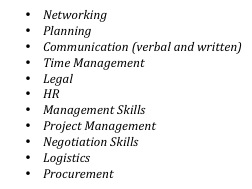#14: Choices
Now that you know how to assess the financial strength and stability of your business, which we covered in my previous article, you may now find yourself facing a series of choices you need to confront as your business continues to develop and grow. A business achieving sustainable profitable growth offers choices to its owner or owners, as it is operating from a position of comparative strength. Choices could include:
- Positioning the business for eventual sale
- Going on the acquisition trail in order to achieve a “step-change” in growth.
- Raising equity or debt on more attractive terms
- Entering into joint ventures or strategic alliances on more advantageous terms and conditions
You have created choices because you have probably worked on (as opposed to in) your business (see this article on prerequisites of sustainable profit growth), and managed to bring about strategic change whilst achieving and maintaining a significant degree of balance between five key components, which are the standing blocks to your existing and ongoing prosperity:
- You have aligned your staff in a way that they share the same picture as you do of the strategic direction of the business. In other words, you are all on the same bus! To do this you have probably kept it simple, referenced it repeatedly and consistently, and tested their understanding and that of other stakeholders.
- A key part of the alignment is the leadership approach; you have adapted your behaviour to relate better to your staff, and enable them to take ownership of the growth, changes and challenges they face.
- Another key part of the alignment is a common understanding of the required customer experience through sales and after-sales. The understanding in turn is probably derived from clear sales and delivery processes which are followed consistently by all, so that the customer experience can be repeated time after time with the same results.
- You have devised a methodology to assess both how the business is doing and how the staff are doing, and link the two aspects as a performance management strategy. So, you are measuring business progress with KPI’s and balanced scorecards, and measuring people processes with a thought-through approach encompassing a) performance management, b) reward and recognition, and c) training and development, which will be key components in reinforcing employee engagement.
- Finally, as a result of the 4 approaches set out above, you have created a positive culture, whereby your staff are motivated and energised to make the right things happen in the right order, and in the right way. Culture drives strategy, but it can equally destroy it. But through your leadership, you have created a culture which is an enabler, not a destroyer.
There may have been other factors at work, but I think the above five, applied in “synch”, are quite often the ones that create a business environment where you can indeed begin to make choices.
In my next article, we shall consider the implications of some of these choices, and how these will have a direct impact of the future of the business and the founder, or founders, themselves.
Posted in: Growing Businesses
Leave a Comment (0) →

